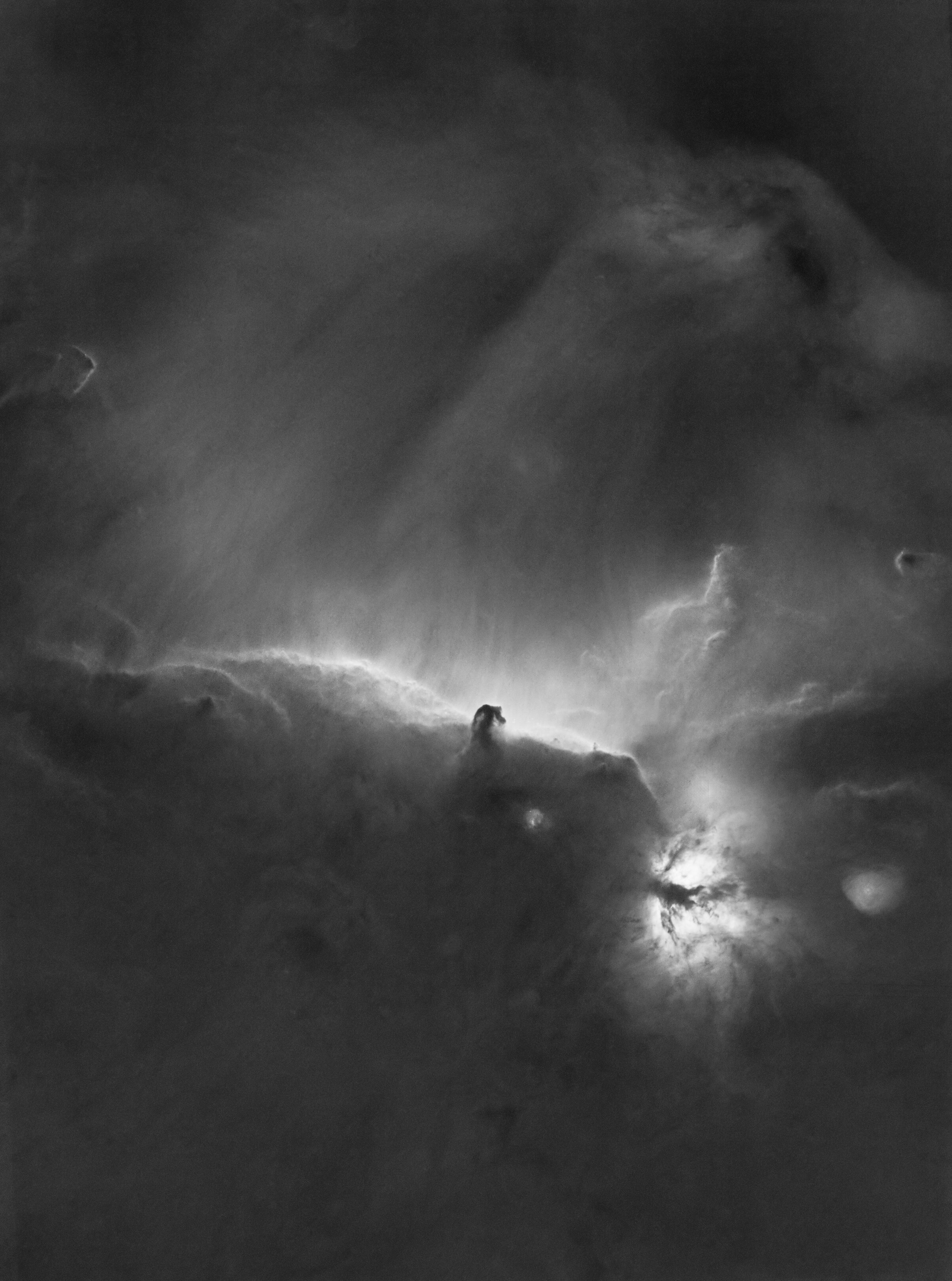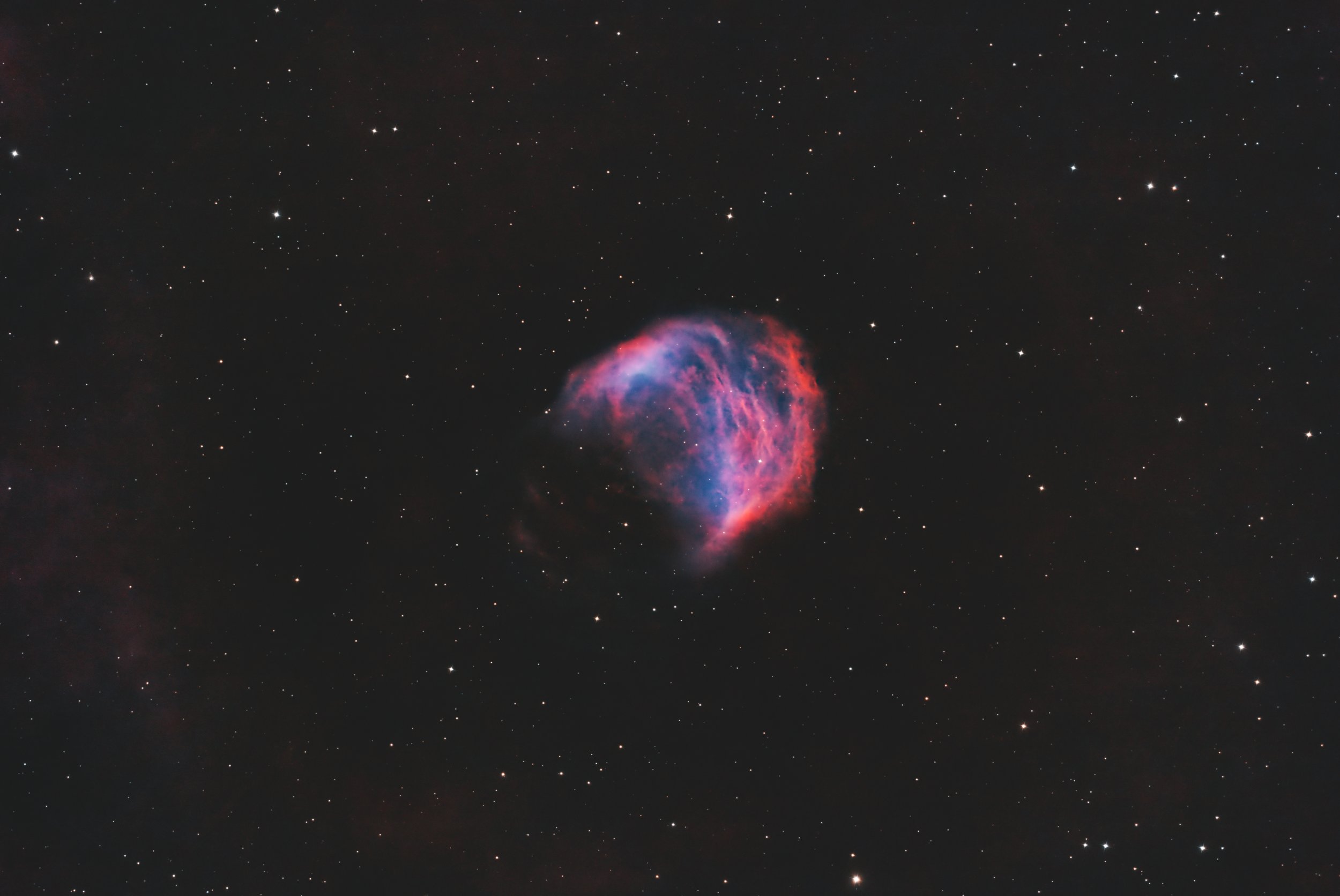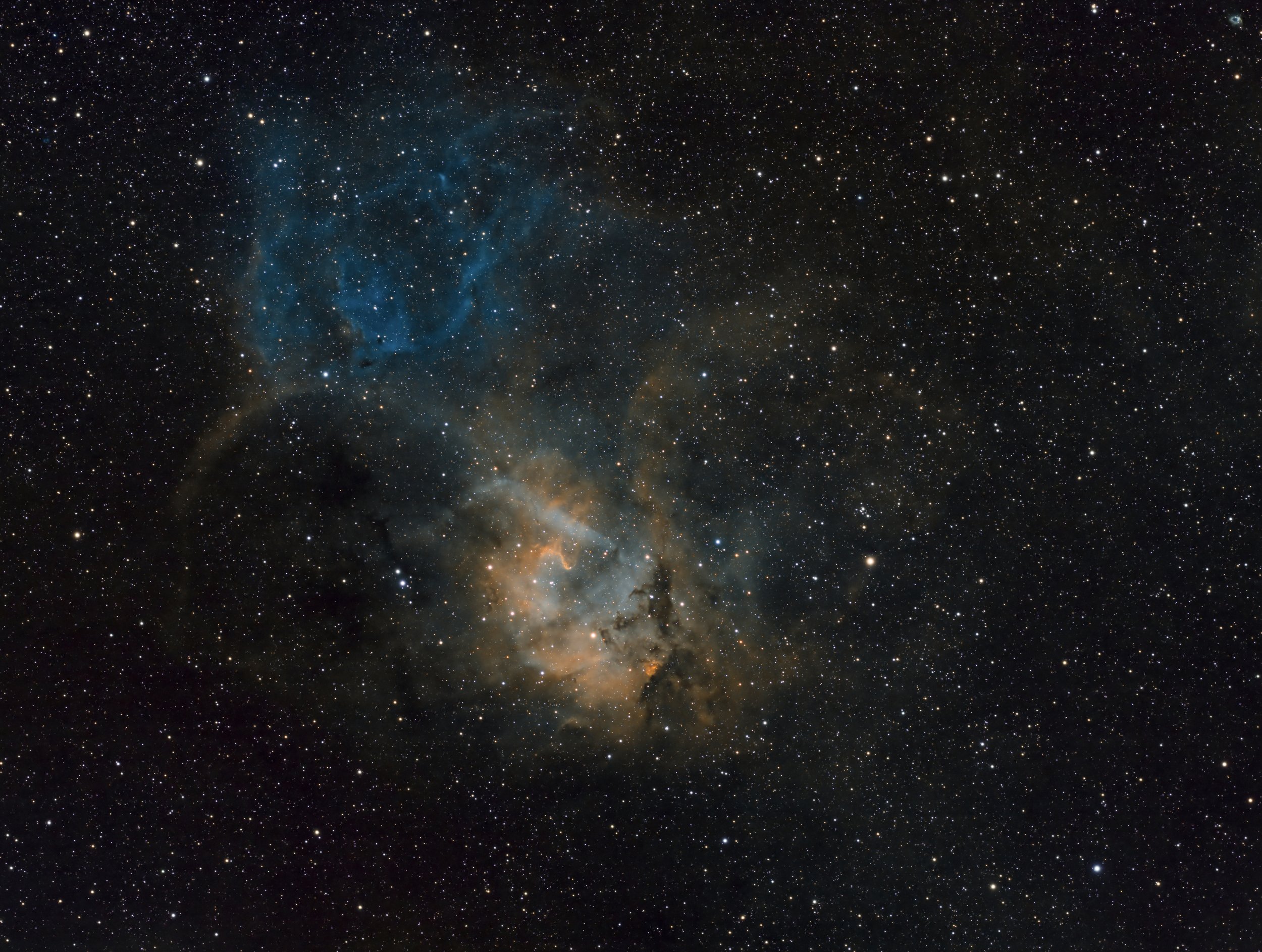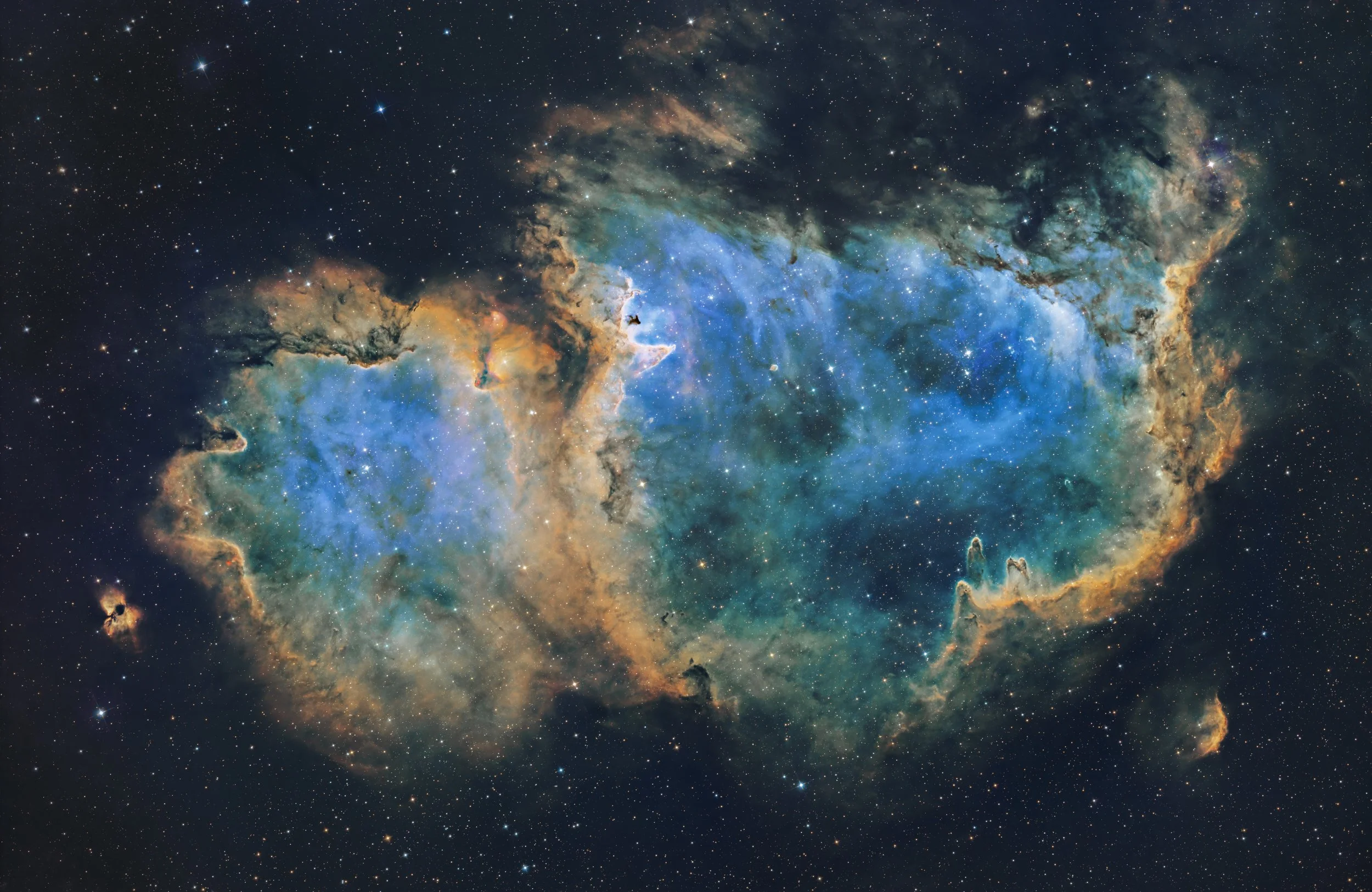The Horsehead Nebula, also known as Barnard 33
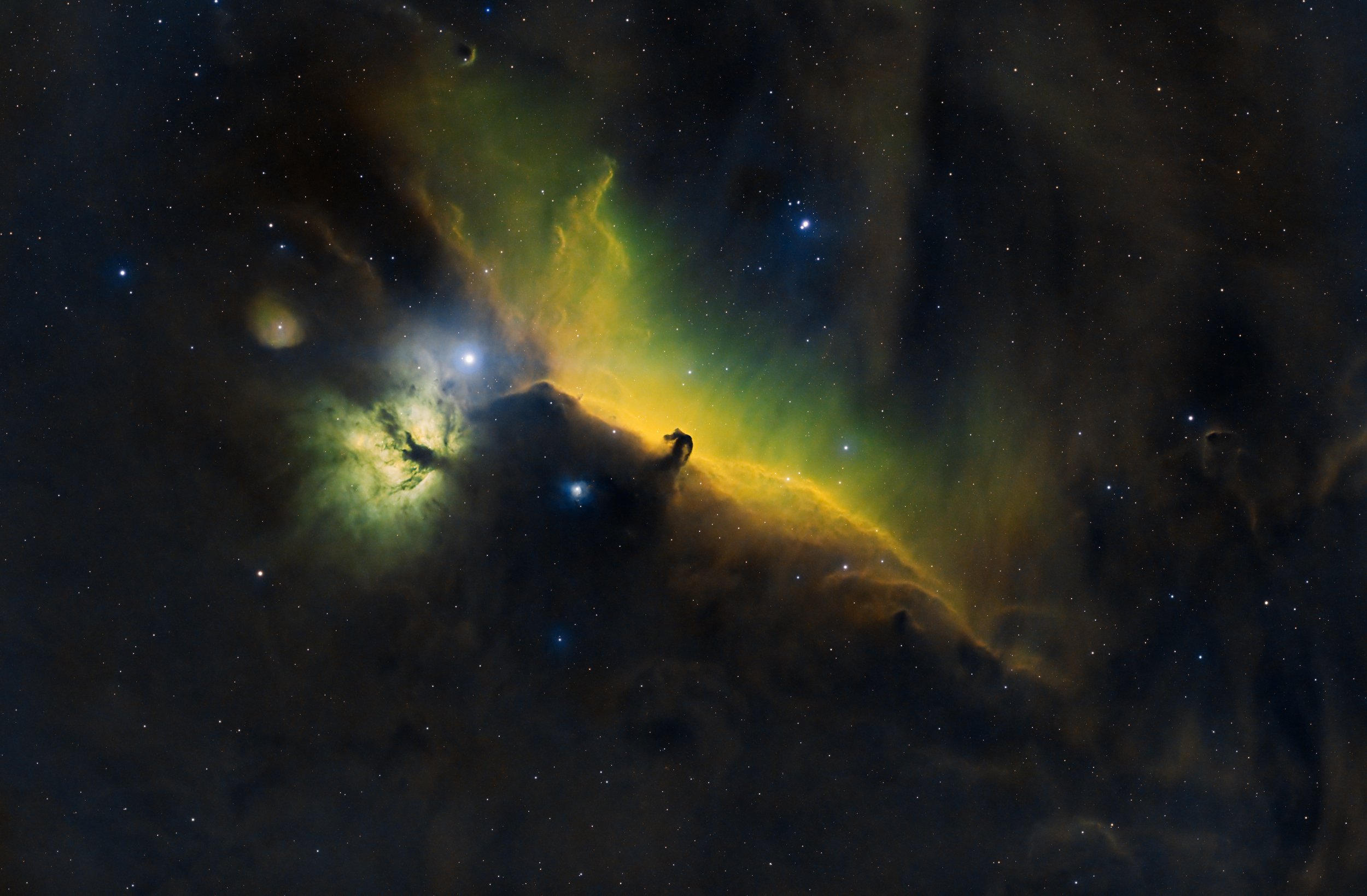
The Horsehead Nebula, also known as Barnard 33, is a dark nebula located in the constellation Orion. It sits within the emission nebula IC 434, which is illuminated by the nearby star Sigma Orionis. The distinctive shape of the Horsehead Nebula resembles that of a horse's head, hence its name. This iconic structure is composed of dense, dark dust and gas that obscures the light behind it, creating a silhouette against the background glow of hydrogen gas. The use of narrowband filters allows for the isolation of specific wavelengths of light, such as those emitted by hydrogen-alpha and oxygen, enhancing the contrast and revealing intricate details within the nebula.
In processing the data captured over the five nights, the Hubble Palette technique is often employed to assign colors to the narrowband images. This technique utilizes the distinct emission lines of hydrogen-alpha, sulfur II, and oxygen III to create a false-color image that highlights different features within the nebula. Typically, hydrogen-alpha is mapped to green, sulfur II to red, and oxygen III to blue, although variations in color assignments can be made to suit artistic or scientific preferences. Through careful processing, subtle details within the Horsehead Nebula, such as the intricate structure of the dust lanes and the faint emission from surrounding gas clouds, can be brought out, resulting in a stunning and detailed portrait of this celestial wonder. The combination of dedicated observation time, advanced imaging equipment, and skilled processing techniques allows for the capture of the Horsehead Nebula's beauty from even light-polluted areas like Davie, providing a glimpse into the vast and captivating cosmos.
I’ve been a dedicated to Squarespace fan for 20 years. Love the product, people and company.



